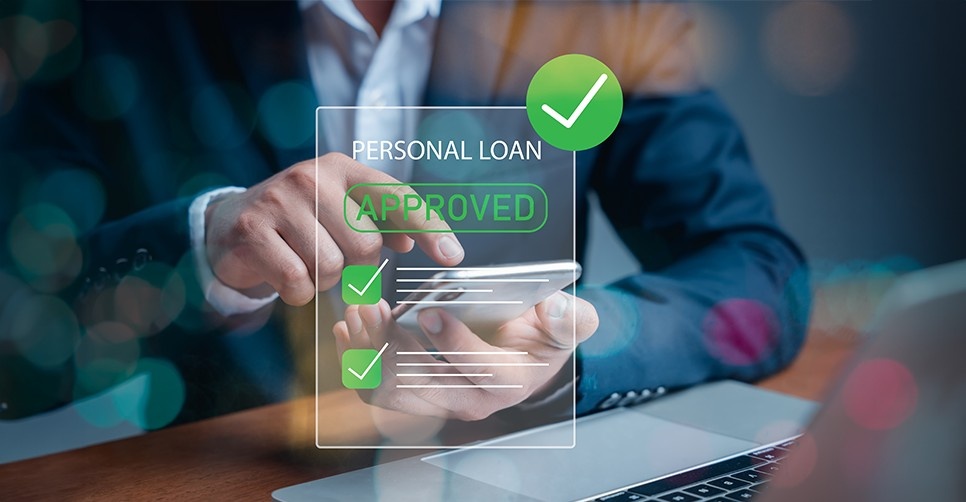A personal loan is a type of loan that is typically used for personal expenses, such as consolidating debt, paying for a vacation, or paying for a major home repair. Personal loans are typically unsecured, which means they are not backed by collateral such as a house or car. This means that the lender is taking on more risk, and as a result, personal loans tend to have higher interest rates than secured loans. online personal loans are available from banks, credit unions, and online lenders, and can be used for a variety of purposes.
How does it work?
Once approved, the lender transfers funds to your bank account, and you use the funds for your intended purpose. You will also have to start repaying the money immediately. During the loan term, your lender will likely report your account activity to the credit bureaus. Timely payments can help you get a positive credit score.
When comparing personal loans online or offline, pay attention to details. Note the following:
- Interest Rate
- Fees
- Repayment Terms
- Loan limits (minimum and maximum)
- Collateral requirements
How are the rates determined?
Personal loan rates are typically determined based on a variety of factors, including the borrower’s credit score, income, debts, and the lender’s underwriting standards.
In general, borrowers with higher credit scores will qualify for lower interest rates because they are less risky borrowers. Lenders also consider the borrower’s income and debts when determining the interest rate, as these factors can affect the borrower’s ability to repay the loan.
Your Annual Percentage Rate is determined based on multiple factors, the most important of which is your credit score. If you have a good credit score, you may qualify for the lowest interest rate from a lender. The best interest rates are generally given to people with credit scores over 700. Some of the additional factors that may affect the APR offered to you are:
-
Annual Income:
Lenders want to see a stable and reliable source of income that can be used to make monthly payments. This can also result in a cheaper APR.
-
Payment History:
People who have a history of paying on time are generally eligible for lower rates.
-
Debt-to-Income Ratio:
Your debt-to-income ratio is the number of your monthly debt payments divided by your gross monthly income. This number is an important part of your financial profile and overall lender profile to help gauge your ability to make loan payments.
Types of Personal Loans
Unsecured personal loans:
Most personal loans are unsecured, meaning you don’t need to post any collateral to qualify. With an unsecured personal loan, you receive cash and then pay back your loan with payments over a fixed payment period.
Secured personal loans:
You must post collateral to qualify for secured loans. Instead of putting down cash as collateral, you may be able to use other assets like a house, boat, or car. The lender can repossess these assets if you default on your payments.
Credit-builder loans:
These loans don’t extend you a line of credit. They are deposited into a savings account controlled by the lender, and you make payments on your balance for the duration of the loan. During this time, lenders review your payments to the credit bureaus to help you build a history of responsible credit use. At the end of the loan, you will receive your full payment minus any loan fees.
Specialized lenders:
Some service-oriented businesses offer personal loans to their customers to help them pay for their products or services. These loans are often convenient but do not always offer the best interest rates and terms.
Common uses of personal loans
One of the major benefits of a personal loan is that you can use your borrowed funds as you wish which makes personal loans diverse and flexible.
Unsecured personal loans are offered to consumers who need to consolidate high-interest credit card debt or debt from other loans. These loans typically have lower interest rates, which can help consumers save money on their monthly payments.
Big Events
Consumers with expensive events like weddings, honeymoons or graduations often apply for personal loans to fill the gaps in their budget. Once the event is over, they have the benefit of repaying their loan in fixed monthly instalments and a fixed interest rate over time.
Investing on self
Personal loans are common especially for educational purposes, such as pursuing a workplace certification or attending a career-enhancing course. You can also opt for a personal loan to pay for improving your self-image, such as dental implants or cosmetic surgery.
Home improvement projects
While home equity loans and home equity lines of credit (HELOCs) are popular with consumers looking to complete remodelling projects, these home improvement loans require you to put up your home as collateral. For this reason, many consumers are turning to unsecured personal loans rather than home equity products. They can borrow the money they need for their project on great terms and conditions but don’t have to put their house on the line.
Emergencies
Personal loans are beneficial for emergencies, like unexpected medical bills, urgent roof replacements, or even funeral expenses. Because some personal loans allow consumers to apply online and receive the money within a few business days, they can offer exceptional security and financial support when an emergency arises.
How to apply for personal loan?
If ready to apply for a personal loan, first follow these steps:
Pull your credits
A higher credit score improves your chances of getting a personal loan with the best rates and terms. If your credit score is on the low end, dispute any errors in your credit reports and take steps to improve your credit before you apply.
Pay off your debts when you can
A lower debt-to-income ratio can help you qualify for a loan with good terms. If yours is high (around 45% or more), it will help pay off some of your debt or increase your income.
Quotes from different lenders
Get quotes from multiple lenders. Once your finances are in order, get loan offers from various lenders. Compare personal loan rates, loan amounts, loan terms and lender reputation. Some lenders like TVS Credit offer a pre-qualification that allows you to assess the terms of your loan without damaging your credit.
Submit your documents
When you choose a lender, you must formally apply for the loan and submit various financial information. These can be bank statements or proof of payment. If you don’t have a job, be ready to show how you intend to make the payments. Some lenders accept alternative forms of income, such as unemployment benefits.
Receive your personal loan
If your loan application is accepted, the lender should send you the money within a few business days to use the funds for the intended purpose. Some lenders like TVS Credit are so convenient and hassle-free that you can get your loan approved within 2 minutes. Setting payment reminders can help you avoid late fees and bruising your credit.
If you need to borrow money and prefer the stability of a fixed payment schedule and monthly payment, a personal loan could be just what you need. and TVS Credit Personal Loan can be the right and hassle free option.









